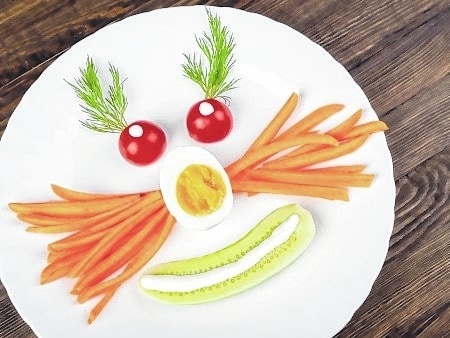
Question: We tend to eat a lot of vegetables and fruit at home, not only during meals but for snacks too. But our daughter seems to be getting less interested in “good” food and is asking for more sweets and salty snacks. How can we steer her back to healthy eating?
Answer: First, good for you for being a good role model for healthful eating. That’s the first, and, some say, the most important step to influencing your daughter’s adoption of healthy habits to last a lifetime.
But as you’re finding out, you’re not the only influence on your daughter. It’s nothing new: Food and beverage advertisers spend nearly $15 billion each year targeting children and teens in the U.S. And, recent studies reveal that more than 80 percent of the food advertisements that adults and children see on television are for foods that are classified as unhealthy.
These marketing efforts have an impact. In the journal Obesity Reviews in July, researchers at McMaster University in Ontario, Canada, analyzed 29 previous studies and found that children are significantly more likely to eat foods high in sugar or salt after seeing food commercials, print advertisements, video games, branded logos and packaging with licensed characters. That’s especially important because other studies reveal that children are exposed to an average of five food ads every hour, the researchers said.
Still, you don’t have to just throw up your hands and give up. In fact, other recent research shows that marketing techniques can also be used to encourage children to eat healthfully.
In that study, published in Pediatrics, researchers at Cornell University created a team of super-power characters called Super Sprowtz, including Miki Mushroom, Zach Zucchini and Suzie Sweet Pea. They put banners including the characters on salad bars in school lunchrooms, and in some lunchrooms they also played a video depicting the characters. In schools with just the banners, 24 percent of the students took vegetables from the salad bar, almost double the number before the banners were installed. In schools that also showed the video, kids choosing vegetables more than tripled, from 10 percent to almost 35 percent. As one of the researchers, who is now at The Ohio State University, said, putting time and resources into marketing healthy choices to kids can work.
What does that mean for your family? Limit your daughter’s exposure to junk food and beverage ads on TV and other outlets. And, be sure her school actively promotes fruits and vegetables, minimizes exposure to ads for unhealthy foods and beverages, and adheres to “Smart Snacks in School.” That regulation requires all foods sold in schools during the school day meet nutrition standards, whether they’re meals, a la carte items, or items sold in school stores and vending machines.
At home, try ways to keep the fun in healthy foods. The U.S. Department of Agriculture has a tip sheet with creative approaches to “Kid-friendly vegetables and fruits,” online at go.osu.edu/kidfriendly. Your daughter can regain her enjoyment of eating right by creating her own unique — and healthy — snacks.


